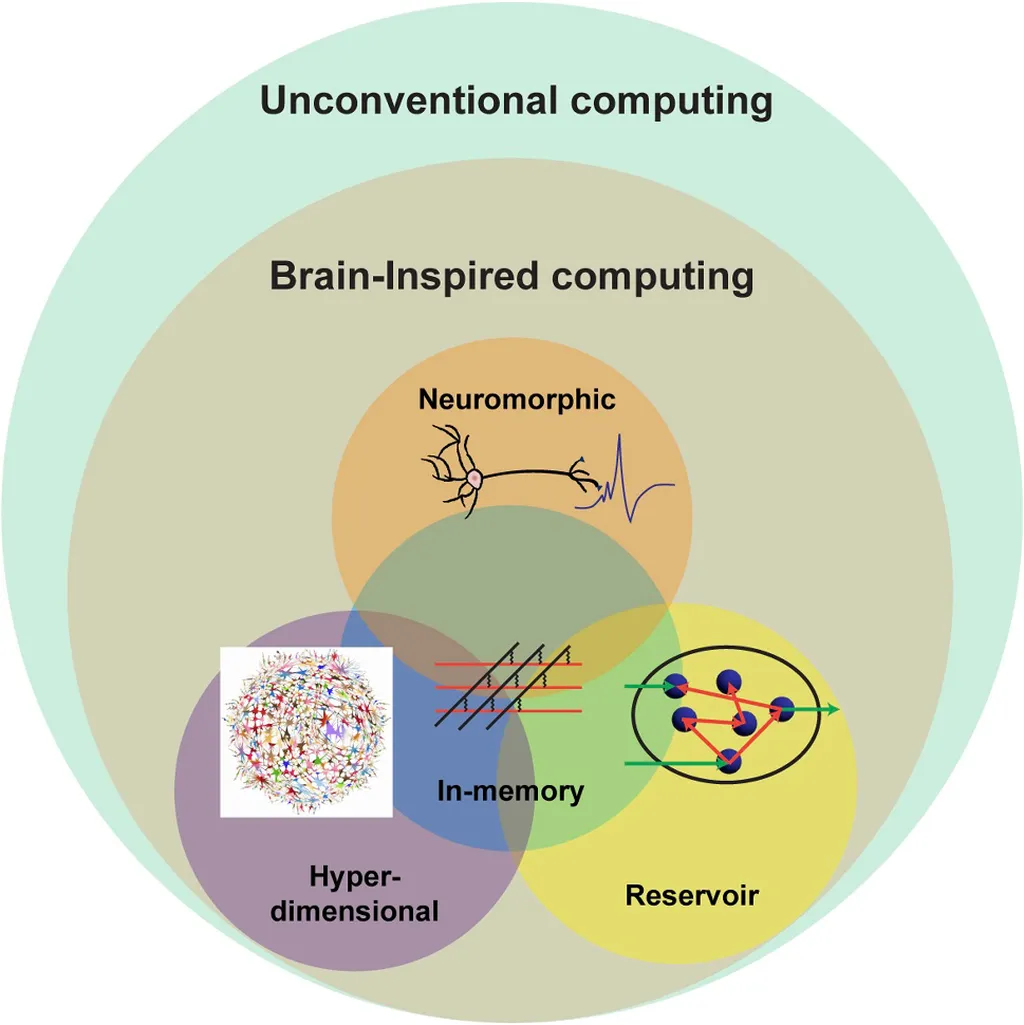In the realm of energy-efficient computing, a team of researchers from the Max Planck Institute for Brain Research in Frankfurt, Germany, led by Pedro Carvalho, Bernd Ulmann, and Wolf Singer, along with Felix Effenberger from the University of Heidelberg, have made a significant stride. Their work, published in the journal Nature Communications, explores the feasibility of implementing a specific type of neural network, known as a Harmonic Oscillator Recurrent Network (HORN), in analog-electronic hardware.
HORNs are a type of recurrent neural network that leverages oscillatory dynamics, offering advantages in parameter efficiency, learning speed, and robustness compared to traditional non-oscillating architectures. However, despite the potential benefits, implementing oscillatory models in analog-electronic hardware that utilize the networks’ transient dynamics has been lacking until now.
The researchers employed a digital twin approach, training a four-node HORN in silico for sequential MNIST classification, a task involving the recognition of handwritten digits. They then transferred the trained parameters to an analog electronic implementation. The results were promising, with a set of custom error metrics indicating that the analog system could successfully replicate the dynamics of the digital model in most test cases.
However, the researchers encountered a challenge when using the readout layer of the digital model on the data generated by the analog system. They observed only a 28.39% agreement with the predictions of the digital model. This mismatch was attributed to a precision difference between the analog hardware and the floating-point representation exploited by the digital model for classification tasks.
To overcome this hurdle, the researchers utilized the analog system as a reservoir with a re-trained linear readout. This approach allowed them to recover the classification performance to that of the digital twin, indicating that the analog dynamics preserved the information content.
The practical applications of this research for the energy sector are significant. Analog electronic circuits, as demonstrated in this study, can effectively implement oscillatory neural networks for computation. This opens up possibilities for energy-efficient computing systems that exploit brain-inspired transient dynamics. Such systems could potentially reduce the energy consumption of data centers and other computing-intensive facilities, contributing to a more sustainable energy future.
In conclusion, this proof-of-concept study establishes that analog electronic circuits can effectively implement oscillatory neural networks for computation, paving the way for more energy-efficient computing solutions. The research was published in the journal Nature Communications, a reputable source for scientific research.
This article is based on research available at arXiv.

